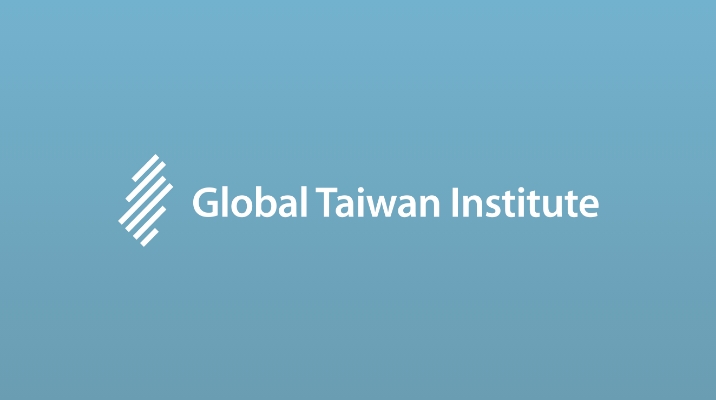Taiwan and the United States have kick-started their plans to finance infrastructure and energy projects in Asia and Latin America in an apparent pushback against China’s Belt and Road Initiative (BRI, formerly known as “One Belt, One Road,” 一帶一路). On September 17, the American Institute in Taiwan (AIT) and the Taipei Economic and Cultural Representative Office (TECRO) in the United States signed a memorandum of understanding on the “Framework to Strengthen Infrastructure, Finance, and Market Building Cooperation” (台美基礎建設融資及市場建立合作架構), which would raise funds through private sector capital to provide greater transparency for infrastructure and construction projects, drawing a direct contrast to the standard practices of BRI projects. Representatives from both sides held their first online working group meeting on October 29 to discuss elevating bilateral cooperation in regional infrastructure investment financing and the creation of sustainable supply chains. Washington seeks to utilize this cooperation framework to help Taipei enhance its influence in Asia and Latin America amid concerns of expanding Chinese economic and political encroachment in those regions, while also elevating the US-Taiwan partnership to a new level of cooperation in global development finance.
Countering China’s Belt and Road Initiative
Chinese President Xi Jinping’s (習近平) signature foreign policy initiative, the Belt and Road Initiative, has been an overarching framework for promoting Chinese connectivity and economic and financial ties with a large swathe of countries around the world. Last year, the World Bank estimated that nearly USD $575 billion in BRI infrastructure projects have been built or are in the process of being constructed. However, the United States has raised concerns about China’s rising economic and political influence in BRI countries, as well as the precarious debt traps it has deployed in developing countries. In 2019, the Trump administration put forth its Free and Open Indo-Pacific Strategy, which included corresponding economic and investment targets. However, US absence from other regional economic arrangements—particularly following Trump’s withdrawal from the Trans-Pacific Partnership (TPP)—has given Beijing the upper hand, allowing it to continually promote BRI in its foreign diplomacy and redraw relations with many countries around the world.
In its strategy to counter BRI, Washington has enlisted the participation of several Asia-Pacific democracies to cooperate on infrastructure investment in developing and emerging economies. Japan, South Korea, and Australia, for example, have agreed to have their companies collaborate with the US International Development Finance Corporation (DFC) to jointly fund infrastructure projects. Moreover, the Blue Dot Network formed by the United States, Japan, and Australia last year seeks to promote higher-quality infrastructure investment that is “open and inclusive, transparent, economically viable, financially, environmentally, and socially sustainable, and compliant with international standards, laws, and regulations.” Taiwan, which has voiced support for the Blue Dot Network, has become the latest Asian democracy to join the US strategy on infrastructure investment financing and raising the bar on quality for investment projects.
US-Taiwan Infrastructure Investment Cooperation
Through the US-Taiwan framework agreement signed in September, Washington has welcomed Taiwan’s contribution to infrastructure development in the Indo-Pacific region and its extensive support for the “Free and Open” Indo-Pacific region. AIT said the new plan would support “quality infrastructure in emerging markets.” Meanwhile, Taiwan’s Foreign Minister Joseph Wu (吳釗燮) stated that this new level of cooperation is bringing the US Indo-Pacific Strategy and Taiwan’s New Southbound Policy (新南向政策) into greater focus and alignment. Previously, in 2017, President Tsai Ing-wen (蔡英文) announced a USD $3.5 billion financing plan for infrastructure development as part of its New Southbound Policy. Whereas Chinese companies and banks are involved in both the construction and finance of infrastructure projects under BRI, Taiwan’s role in the US infrastructure development scheme is largely limited to undertaking clean and transparent infrastructure finance.
In November, Taiwan and the United States held their first Economic Prosperity Partnership Dialogue, in which they discussed safe and secure supply chains, investment screening, and clean infrastructure cooperation. Both sides also signed a five-year memorandum of understanding, pledging to bolster cooperation on issues including infrastructure finance and protection of economic innovations and technologies. In the near future, Taipei and Washington, as well as through their respective working groups set up by the US Treasury Department and Taiwan’s Finance Ministry, will continue to discuss increasing private sector participation, introducing more private sector funds, and developing regional debt markets, according to Taiwan’s finance minister Su Jain-rong (蘇建榮). Both sides will also assist the Indo-Pacific region and Latin America to build a financial and legal environment for infrastructure and energy sectors. With the broader aim of creating new and more resilient supply chains in the Indo-Pacific, the US-Taiwan collaborative platform will help South and Southeast Asian countries reduce their reliance on China and shift production to a friendly, alternative supply chain.
Boosting Taiwan’s Diplomatic Relations and Influence
The new US-Taiwan infrastructure investment cooperation is meant to not only contain Chinese expansionism in the Indo-Pacific and Latin America, but also to shore up Taiwan’s relations with its remaining diplomatic partners in those regions and help the island gain more international support. China’s tried-and-true tactic of promising infrastructure development projects and hefty financial assistance to Taiwan’s diplomatic allies that switch recognition from the Republic of China (ROC) to the People’s Republic of China (PRC) has led to several diplomatic losses for Taipei over the past several years. Beijing took away Panama, a long-time ROC ally, in June 2017, and successfully pressured Panama City to withdraw from its free trade agreement with Taipei. The Dominican Republic and El Salvador later switched recognition from Taipei to Beijing in May and August 2018, respectively. In 2019, two of Taiwan’s diplomatic partners in Oceania—the Solomon Islands and Kiribati—broke off diplomatic relations with Taipei. China has also sought to lure Tuvalu, one of Taiwan’s four remaining allies in the Pacific, with a USD $400 million investment proposal to build artificial islands, but this offer was reportedly rejected by Tuvalu’s government late last year. Nonetheless, China’s outsized economic resources remain potent threats to Washington and Taipei’s economic and diplomatic strategies in these regions.
The United States has deep reservations about China’s rising economic profile and political influence in Southeast Asia, the Pacific Islands, and Latin America, which have become three concurrent arenas of US-China great power competition. Southeast Asian economies have a huge need for at least USD $210 billion annually in infrastructure investment to maintain economic growth until 2030, according to an estimate by the Asian Development Bank. Chinese infrastructure investment in Southeast Asia has mainly been concentrated in Indonesia (USD $93 billion), Vietnam (USD $69 billion), Malaysia (USD $34 billion), and Singapore (USD $28 billion), though China’s overall infrastructure investments in the region lag behind those of Japan. Furthermore, in a crowded field where China, Japan, South Korea, and other countries are competing for infrastructure projects in Southeast Asia, Taipei may serve itself well to utilize its comparative advantages, such as in information and communication technology and smart cities, to make a deeper imprint.
Beijing is also steadily making inroads into Latin America, the traditional backyard and sphere of influence of the United States. Nineteen countries in Latin America have signed up to participate in China’s BRI, while Chinese companies have invested over USD $123 billion in regional economies—coupled with USD $137 billion in Chinese bank loans for projects in the region—since 2005. In addition, Chinese companies Huawei and ZTE are constructing telecommunications network systems in 24 countries in Latin America, triggering security concerns. In an apparent response to BRI, Washington has been promoting the América Crece program, also known as the Growth in the Americas program, which aims to “catalyze private-sector investment in Latin America and the Caribbean.” This program could also provide an alternative business framework that prioritizes projects that benefit the region and promote good governance practices. Taiwan can also serve as a partner in this US initiative by emphasizing clean and transparent infrastructure investment projects in the region.
Given that Taiwan’s role is narrowly focused on development finance and smaller projects—in contrast to the sprawling and massive construction projects undertaken by Chinese companies—Taiwan is unable to outcompete China for infrastructure projects across the board in Southeast Asia. Thus, it may be more feasible and efficacious for Taipei to focus on financing infrastructure projects in more diplomatically crucial areas such as the Pacific Islands, where it has four remaining diplomatic allies (Marshall Islands, Palau, Nauru, and Tuvalu), as well as in its five existing allies in Latin America (Belize, Nicaragua, Guatemala, Honduras, and Paraguay). Taipei could draw on its new infrastructure investment financing platform with the United States and work alongside like-minded partners such as Japan and Australia to pack more of a punch to counter China’s expansionism in these diplomatically critical regions.
The main point: The new US-Taiwan infrastructure investment cooperation agreement seeks to counter China’s sprawling Belt and Road Initiative while also shoring up Taiwan’s relations with its diplomatic allies in the Pacific Islands and Latin America against the threat of Chinese economic and political encroachment.


